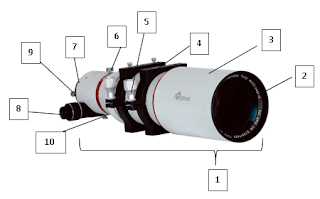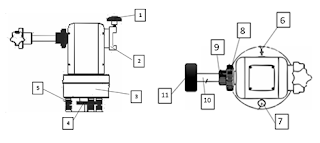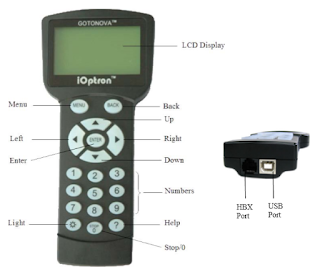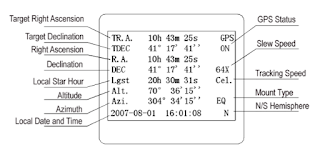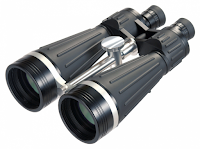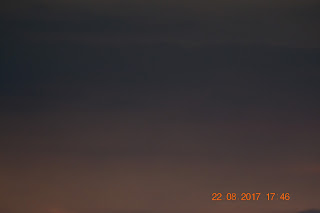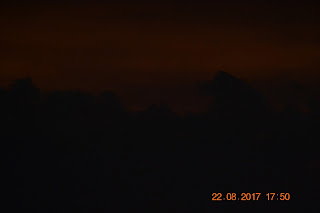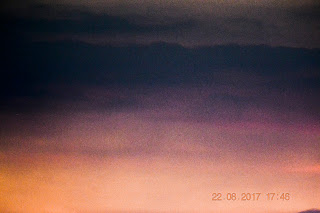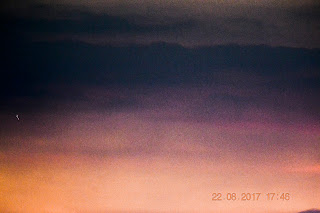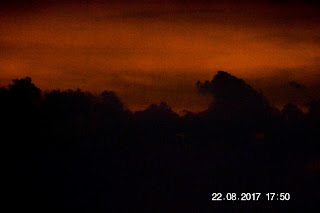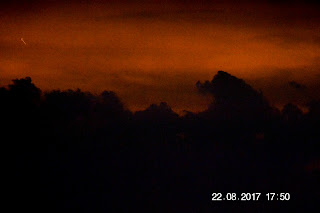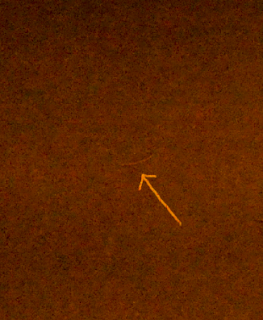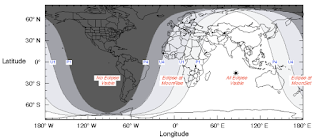
In studying a science, of course there are theories and also field practice, studying physics and biology must definitely practice in the laboratory, learning sports science should definitely practice in the field, learning the language of science should also practice in the language laboratory.
The need for practice in learning a science is a necessity, as well as the science of Islamic Astronomy. according to some people's understanding, Islamic Astronomy deals with the calculations of heavenly bodies, but they are useless if they are not applied in the field. there are several tools that become the needs of the astronomers, one of which is the telescope. In Islamic Astronomy the telescope is usually used for rukyatul hilal (observing the crescent) in the determination of lunar calendar, or for eclipse observation.
This time I will discuss a bit about the use and specifications of Celestron Nexstar 4 SE telescope.
CELESTRON NEXSTAR 4 SE
The telescope has two functions, the first of which serves as a horizontal telescope, and the second serves as an equatorial telescope. This is one of the advantages of this telescope. for the tube type is a reflector telescope with a cassegrain telescope design.
Telescope parts:
1. Optical Tube, the main part of the telescope, in this section will occur light reflection, which will then produce images of distant objects.
2. Star Pointer Finderscope, this section serves to make it easier when shooting sky objects.
3. Eyepiece, this part is the ocular lens of the telescope, this lens can also be changed to adjust the magnification of the telescope.
4. Focuser Knob, this section is used to adjust the focus of the telescope image. This section should always be arranged, especially if we replace eyepiece or change of observer, so that picture is always sharp.
5. Threaded Photographic Adapter, an adapter for SLR / DSLR cameras that have been connected by T-ring
6. Flip Mirror Control, Flip Glass used for image selection, whether light is forwarded to the camera ?, or is reflected to eyepiece ?.
7. Battery Compartment, Battery Place, this telescope needs 8 batteries to run it.
8. Tripod, this part is the foot of the telescope that supports mounting and tubes. This section is also commonly used to regulate the flatness of the telescope.
9. Accessory Tray, place to put various accessory, like eyepiece, T-ring. On the side of the Accessory Tray there is a vertical stick, this stick is used to support when we will use the telescope with equatorial model.
10. ON / OFF Switch, the button to turn the telescope on and off, beside this button is also an AC Adapter input which is used to run telescope without battery.
11. Hand Control, this part is a remote used to control the telescope.
12. Liquid Crystal Display, Screen on the remote, inside is also usually listed coordinates of the telescope and also objects observed celestial objects.
For how to use? please visit this link Operational Celestron NexStar 4SE.
The need for practice in learning a science is a necessity, as well as the science of Islamic Astronomy. according to some people's understanding, Islamic Astronomy deals with the calculations of heavenly bodies, but they are useless if they are not applied in the field. there are several tools that become the needs of the astronomers, one of which is the telescope. In Islamic Astronomy the telescope is usually used for rukyatul hilal (observing the crescent) in the determination of lunar calendar, or for eclipse observation.
 |
| Source : https://www.celestron.com |
CELESTRON NEXSTAR 4 SE
The telescope has two functions, the first of which serves as a horizontal telescope, and the second serves as an equatorial telescope. This is one of the advantages of this telescope. for the tube type is a reflector telescope with a cassegrain telescope design.
Telescope parts:
 |
| Source : https://www.celestron.com |
2. Star Pointer Finderscope, this section serves to make it easier when shooting sky objects.
3. Eyepiece, this part is the ocular lens of the telescope, this lens can also be changed to adjust the magnification of the telescope.
4. Focuser Knob, this section is used to adjust the focus of the telescope image. This section should always be arranged, especially if we replace eyepiece or change of observer, so that picture is always sharp.
5. Threaded Photographic Adapter, an adapter for SLR / DSLR cameras that have been connected by T-ring
6. Flip Mirror Control, Flip Glass used for image selection, whether light is forwarded to the camera ?, or is reflected to eyepiece ?.
7. Battery Compartment, Battery Place, this telescope needs 8 batteries to run it.
8. Tripod, this part is the foot of the telescope that supports mounting and tubes. This section is also commonly used to regulate the flatness of the telescope.
9. Accessory Tray, place to put various accessory, like eyepiece, T-ring. On the side of the Accessory Tray there is a vertical stick, this stick is used to support when we will use the telescope with equatorial model.
 |
| Source : https://www.celestron.com |
11. Hand Control, this part is a remote used to control the telescope.
12. Liquid Crystal Display, Screen on the remote, inside is also usually listed coordinates of the telescope and also objects observed celestial objects.
For how to use? please visit this link Operational Celestron NexStar 4SE.



